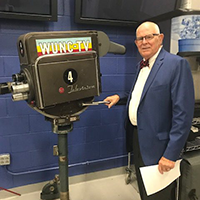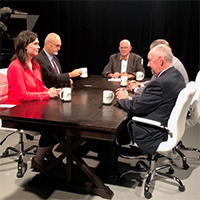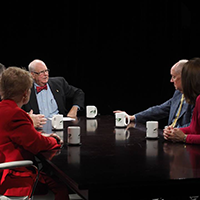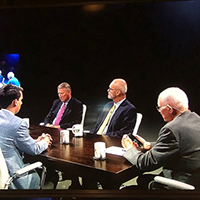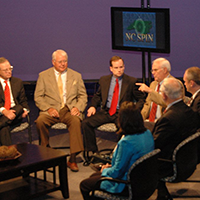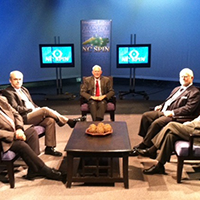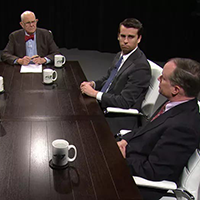There's hope for healthcare
Published July 10, 2025
By Tom Campbell
North Carolina is the 10th worst state for healthcare access. Many residents live in “healthcare deserts.” The North Carolina Institute of Medicine reports that 40 of our 100 counties do not meet the target goal of one primary care physician per 1,500 residents. Further, 12 rural hospitals have either closed or converted to providing lesser services since 2006.
This came to mind as I read a feature about Williamston’s Martin General Hospital in The New York Times. Martin General was one of those closed due to decreasing financial sustainability. The county still owns the facility, keeping on the lights, heat and maintenance in hopes it can reopen. Medicaid expansion offered a flicker of hope, but with forthcoming major cuts to Medicaid from the “Big Beautiful Bill,” that dream is dimming.
One woman reported that her 91-year-old father experienced acute heart failure. 911 told her it would take emergency workers more than 40 minutes to reach her and take her father to the nearest hospital in Bertie County. Instead, she put her dad in the car and sped to Bertie. He died before she arrived.
How are people, especially those in rural sections, going to have good healthcare access? Often, these in rural counties are poorer, have a high percentage of minorities and people more dependent on Medicaid.
During the pandemic, when we were confined to our homes, there was an immediate push toward providing telehealth medical service - medical care virtually, online or remotely. There was an awkward learning curve for both patients and care providers trying to examine patients without a physical presence. Results were less than satisfying and when COVID subsided the demand for and use of telemedicine declined.
But the concept had promise and some were unwilling to give up on the potential benefits of telehealth, benefits like easier access to healthcare to people with mobility issues or those in remote areas. Telehealth can be more convenient than driving long distances to care facilities and waiting hours for attention. Further, it can provide significant cost savings to both patients and care providers while delivering quality care.
Telehealth also has problems to overcome, mostly the ability to provide thorough examinations, privacy issues, compensation for care providers and how to provide frequent patient monitoring and testing. But the biggest roadblock is technical problems like broadband Internet access.
There are many working to overcome those drawbacks. One of the leaders is UNC Healthcare. Since 2021, they have been developing and implementing an innovative program called Advanced Care at Home. It can provide routine medical visits, follow-up appointments, chronic disease management and mental healthcare.
Our family recently had an experience using Advanced Care at Home after our family member’s tests revealed an imbalance of certain electrolytes serious enough to require frequent monitoring but not urgent enough to dictate in-patient hospital care.
Given the option of participating in this program or being in hospital, our family member wasted no time in wanting the comforts of home, however one of the stipulations of this program was that the patient was required to remain confined to home and to stay close to the equipment provided.
We left the hospital after learning about this program. No sooner had we arrived home than a paramedic was on our front porch to set up the necessary equipment and provide instructions how the program worked. First, there was a separate modem (with a battery backup) that connected directly to the UNC service. It had a tablet with a camera that allowed private two-way video and audio communications and had a clearly marked HELP button that, when pressed, would connect us with a nurse or doctor at UNC any time night or day. There was also a scale for patient weight, a blood pressure cuff, a thermometer, vials for blood and urine collection.
Using the camera, our family member had to show the nurse at UNC the labels on all prescriptions. A physician came online to discuss the patient’s medical situation and tell us which meds would be continued and which wouldn’t. The paramedic took blood and tested for vitals, carefully recounting the results with the nurse on the line. Two in-home visits per day were required, with zoom-like check-ins with the care team. It was extremely well organized, very patient friendly, and effective. We had constant care in our own home (perhaps even better than being in hospital) and were told that even with this level of personal care the costs would be cheaper than being in the hospital.
Advanced Care at Home offers healthcare access and quality medical care to patients. It is being employed with a limited number of patients at this time, but we hope the program can continue to improve and expand. It can offer wider healthcare access and better health care, especially in rural areas.
Tom Campbell is a Hall of Fame North Carolina broadcaster and columnist who has covered North Carolina public policy issues since 1965. Contact him at tomcamp@carolinabroadcasting.com
